In healthcare, small actions can have life-saving consequences. One of the most important—and often overlooked—areas where this holds true is infection control. While major infection outbreaks make headlines, the everyday transmission of germs, bacteria, and viruses often happens silently. Whether it’s a missed handwashing opportunity, improper PPE use, or a poorly disinfected surface, even small lapses can lead to big problems. That’s why integrating infection control into daily clinical routines is critical—not just during a pandemic, but always.
In this blog, we’ll explore why infection control matters, how it protects both patients and healthcare teams, and how you can seamlessly incorporate best practices into your clinical routine.
Why Infection Control Is Non-Negotiable
Infection prevention isn’t just a policy—it’s a core part of delivering safe, high-quality care. The numbers speak for themselves:
- According to the CDC, 1 in 31 hospital patients has at least one healthcare-associated infection (HAI) on any given day in the U.S.
- Common HAIs such as catheter-associated urinary tract infections (CAUTIs), ventilator-associated pneumonia (VAP), and surgical site infections (SSIs) lead to prolonged hospital stays, increased costs, and higher mortality risks.
Beyond patient safety, infections can severely impact healthcare operations. Staff absenteeism due to illness, increased readmissions, and reputational harm are just a few of the ripple effects. The good news? Many HAIs are preventable with consistent, everyday infection control practices.
Infection Control Is Everyone’s Responsibility
One common misconception is that infection prevention is only the job of the infection control team or the “compliance department.” In reality, infection control is a shared responsibility. From frontline nurses and physicians to janitorial staff and receptionists, every role contributes to creating a safer care environment.
Even small habits—like how you clean your stethoscope or when you change gloves—can make a significant difference. The key is turning these habits into part of the daily workflow.
Integrating Infection Control: 6 Key Areas

Here’s how healthcare providers can integrate infection control into everyday clinical practice, without it feeling like an extra burden.
1. Hand Hygiene: The First Line of Defense
This may seem basic, but hand hygiene remains one of the most effective ways to stop the spread of infections. Integrating infection control starts here—with simple, consistent handwashing practices that protect both patients and staff.
Tips for success:
Follow the 5 Moments for Hand Hygiene (before touching a patient, before clean procedures, after exposure to body fluids, after touching a patient, and after touching patient surroundings).
Keep alcohol-based hand rubs accessible in every patient room.
Normalize hand hygiene reminders among peers—it’s okay to respectfully call it out.
2. Personal Protective Equipment (PPE): Right Gear, Right Time
PPE is only effective if used correctly. Gloves, masks, gowns, and face shields must be worn when needed—and discarded properly. Integrating infection control into everyday clinical routines means using PPE appropriately based on risk and procedure.
Make it routine:
Know when each type of PPE is required for different types of interactions.
Avoid “overusing” PPE in low-risk settings, which can create false security.
Include PPE donning and doffing demonstrations in team huddles or refreshers.
3. Environmental Cleaning: More Than Just Tidiness
Clean rooms don’t just look better—they reduce infection risk. Shared equipment like IV poles, keyboards, and blood pressure cuffs can harbor bacteria. A key part of integrating infection control is establishing a clear, consistent approach to cleaning and disinfection.
Improve consistency by:
Assigning clear cleaning responsibilities among staff.
Using checklists for high-touch surfaces and patient areas.
Incorporating daily cleaning routines into shift handovers.
4. Safe Injection and Medication Practices
Unsafe injection practices can result in serious outbreaks of hepatitis and bacterial infections. Integrating infection control includes reinforcing safe injection techniques to prevent cross-contamination and medication-related risks.
Best practices include:
Using single-dose vials whenever possible.
Never reusing syringes or needles—even on the same patient.
Properly labeling and dating all opened medications.
5. Device and Line Management
Catheters, IVs, and other invasive devices increase the risk of infection the longer they’re in place. Managing these properly is essential to patient safety and an important element of integrating infection control into clinical decision-making.
Protect your patients by:
Reviewing device necessity daily.
Removing catheters and lines as soon as they’re no longer needed.
Using full barrier precautions for insertion and proper maintenance protocols.
6. Staff Training and Communication
Infection control protocols are only as strong as the team implementing them. Regular training, open communication, and accountability ensure the principles of integrating infection control are part of the culture—not just a checklist.
Ways to stay sharp:
Offer brief “infection control refreshers” during monthly meetings.
Share real-life case studies to highlight impact.
Encourage a speak-up culture where safety concerns are addressed, not dismissed.
Going Beyond the Checklist: Making It Culture
It’s one thing to have protocols—it’s another to live them. Infection control works best when it becomes part of your team’s culture. That means modeling good practices, reinforcing the “why,” and celebrating wins, no matter how small.
Some simple culture builders:
- Post reminders in break rooms or at nurses’ stations.
- Share infection control success stories in staff newsletters.
- Acknowledge staff who go above and beyond for safety.
The ROI of Integrating Infection Control into Your Practice
Beyond protecting patients and staff, strong infection prevention also makes financial sense.
- Reduced infections = reduced costs. Treating an HAI can cost hospitals thousands of dollars per patient, not to mention penalties for preventable readmissions.
- Improved patient satisfaction. Patients are more likely to trust and recommend facilities where they feel safe.
- Stronger compliance. Infection control helps meet OSHA, CDC, and Joint Commission standards—avoiding fines and accreditation risks.
Final Thoughts: Safety Starts with Routine
Infection control isn’t just about responding to crises—it’s about building safer habits into everything you do, every single day. By weaving infection control into your team’s daily routine, you protect your patients, safeguard your colleagues, and strengthen the reputation of your practice. It’s not about perfection. It’s about consistency.
Start small. Be consistent. And remember: every clean hand, disinfected surface, and safely handled device makes a difference.
Need Help Training Your Staff?
At American Medical Compliance, we offer customized Infection Control Training programs built for real-world clinical environments. Whether you’re onboarding new staff or reinforcing best practices, our interactive modules make compliance simple, clear, and effective.
Ensure compliance. Boost operational efficiency. Foster patient and staff trust
Enroll your large team today through our free course development program—designed to meet your practice’s unique needs.
Contact us now to get started. Let’s build a safer, more efficient future—together.



